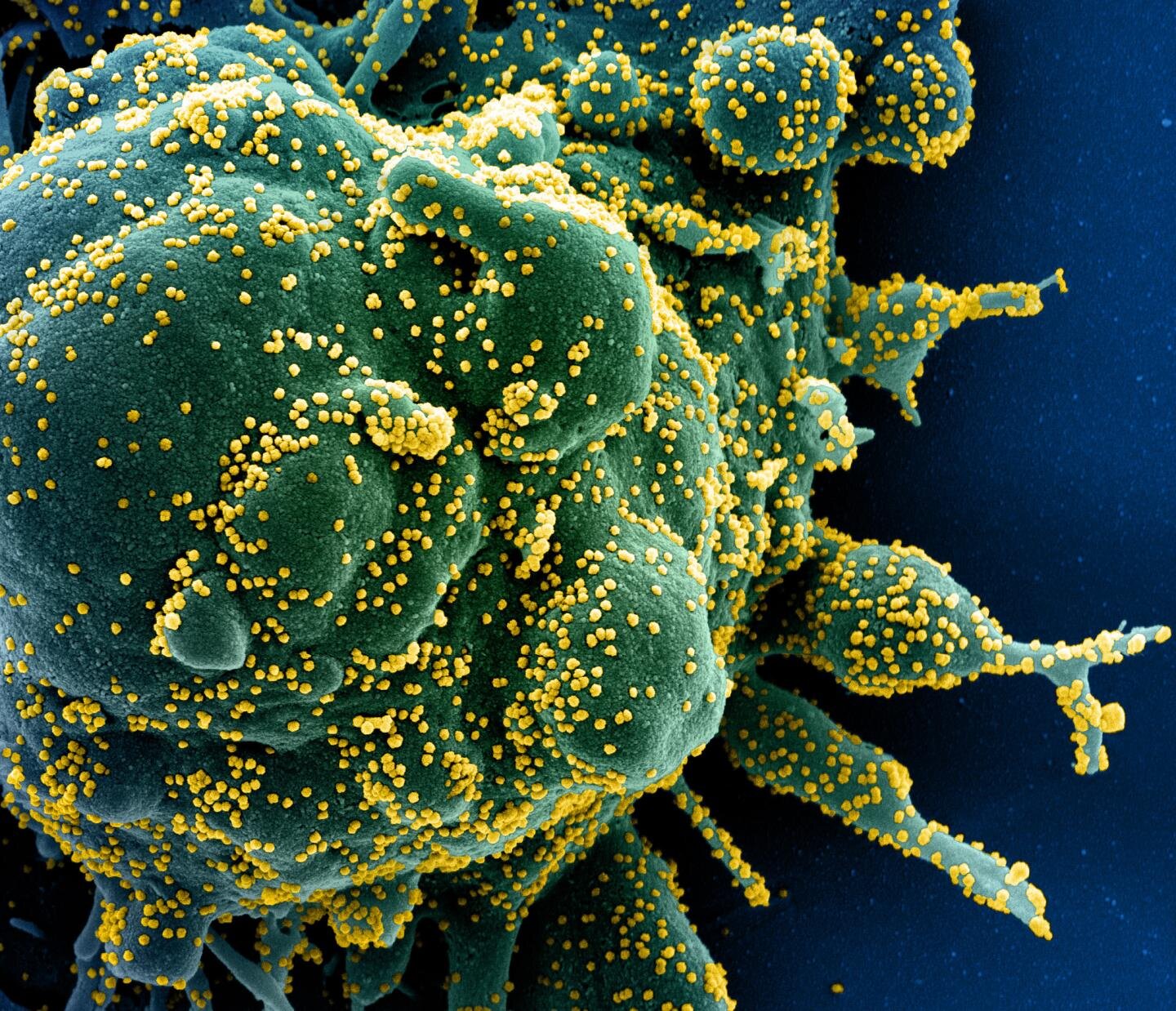
Scanning electron micrograph of an apoptotic (green) cell heavily infected with SARS-COV-2 virus particles (yellow), isolated from a patient sample. Image captured at the NIAID Integrated Research Center (IRF) in Fort Detrick, Maryland. Credit: NIH / NIAID
New data suggests that almost all COVID-19 survivors have the immune cells needed to fight reinfection.
The findings, based on analyzes of blood samples from 188 COVID-19 patients, suggest that responses to the new coronavirus, SARS-CoV-2, from all major participants in the “adaptive” immune system, which learns to fight specific pathogens, may last at least eight months after the onset of symptoms of the initial infection.
“Our data suggest that the immune response exists – and remains,” LJI Professor Alessandro Sette, Dr. Biol. Sci., Who co-led the study with Professor Shane Crotty, Ph.D., and Assistant Research Professor Daniela Weiskopf, Ph.D. of LJI.
“We measured antibodies, memory B cells, helper T cells and killer T cells, all at the same time,” said Crotty. “As far as we know, this is the largest study ever done, for any acute infection, that measured all four components of immune memory.”
The results, published on January 6, 2021, online edition of Science, may mean that survivors of COVID-19 have protective immunity against serious SARS-CoV-2 disease for months, perhaps years after infection.
The new study helps to clarify some data regarding COVID-19 from other laboratories, which showed a dramatic drop in anti-COVID antibodies in the months after infection. Some feared that this decline in antibodies would mean that the body would not be equipped to defend itself against reinfection.
Sette explains that a decline in antibodies is very normal. “Of course, the immune response decreases over time to a certain extent, but that’s normal. That’s what immune responses do. They have a first phase of acceleration and, after this fantastic expansion, eventually the immune response contracts a little bit and reaches a steady state “, says Sette.
The researchers found that virus-specific antibodies persist in the bloodstream months after infection. It is important to note that the body also has immune cells called ready memory B cells. If a person encounters SARS-CoV-2 again, those memory B cells can be reactivated and produce antibodies against SARS-CoV-2 to fight reinfection.
The SARS-CoV-2 virus uses its “pico” protein to initiate infection of human cells, so the researchers looked for specific memory B cells for the SARS-CoV-2 peak. They found that peak-specific memory B cells actually increased in the blood six months after infection.
The survivors of COVID-19 also had an army of T cells ready to fight reinfection. The memory “helper” CD4 + T cells remained, ready to trigger an immune response if they saw SARS-CoV-2 again. Many CB8 + killer T cells from memory also remained, ready to destroy infected cells and stop reinfection.
The different parts of the adaptive immune system work together, so seeing COVID-fighting antibodies, memory B cells, memory CD4 + T cells and memory CD8 + T cells in the blood more than eight months after infection is a good signal.
“This implies that there is a good chance that people will have protective immunity, at least against serious illness, for that period of time, and probably much beyond that,” says Crotty.
The team warns that protective immunity varies dramatically from person to person. In fact, the researchers observed a 100-fold variation in the magnitude of immune memory. People with weak immune memory may be vulnerable to a recurring case of COVID-19 in the future or may be more likely to infect others.
“There are some people who are at the bottom of their immune memory wells, and perhaps those people are much more susceptible to reinfection,” says Crotty.
“It appears that people who have been infected will have some degree of protective immunity against reinfection,” adds Weiskopf. “How much protection has yet to be established.”
The fact that immune memory against SARS-CoV-2 is possible is also a good sign for vaccine developers. Weiskopf emphasizes that the study tracked responses to natural SARS-CoV-2 infection, not immune memory after vaccination.
“It is possible that immune memory will have a similar duration after vaccination, but we will have to wait until the data arrives to be sure,” said Weiskopf. “Several months ago, our studies showed that the natural infection induced a strong response, and this study now shows that the responses endure. The vaccine studies are in the early stages and have so far been associated with strong protection. We hope that A similar pattern of lasting responses over time will also emerge for responses induced by the vaccine. “
The researchers will continue to analyze samples from patients with COVID-19 in the coming months and hope to track their responses 12 to 18 months after the onset of symptoms.
“We are also doing very detailed analyzes at a much, much higher granularity about which parts of the virus are recognized,” says Sette. “And we plan to assess the immune response not only after natural infection, but after vaccination.”
The team is also working to understand how immune memory differs between people of different ages and how it can influence the severity of COVID-19 cases.
Follow the latest news on the coronavirus outbreak (COVID-19)
Jennifer M. Dan et al, Immune memory for SARS-CoV-2 assessed for up to 8 months after infection, Science (2021). DOI: 10.1126 / science.abf4063
Supplied by La Jolla Institute for Immunology
Quote: The protective immunity against SARS-CoV-2 can last eight months or more (2021, 6 January), obtained on 8 January 2021 at https://medicalxpress.com/news/2021-01-immunity-sars- cov-months.html
This document is subject to copyright. In addition to any fair dealing for the purpose of study or private research, no part may be reproduced without written permission. The content is provided for informational purposes only.
